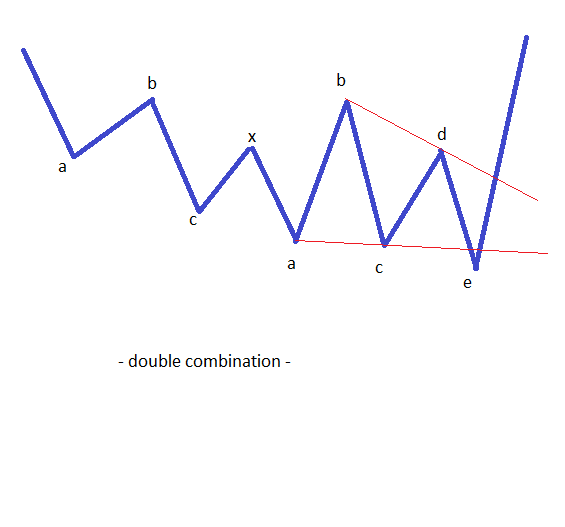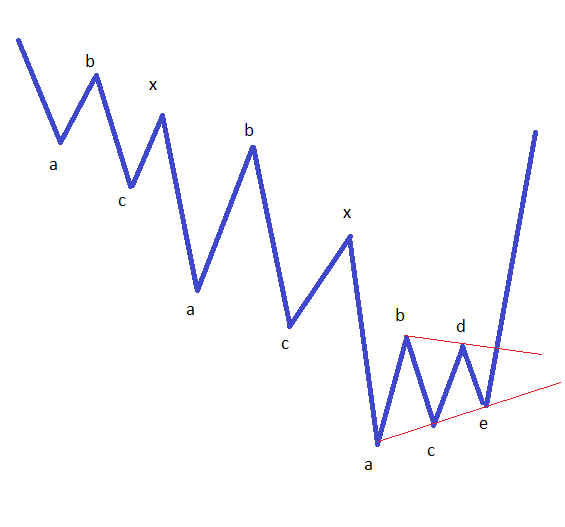Trading Double & Triple Combinations Made Easy
Double and triple combinations are one of the most common, if not the most common, complex corrections. Double combinations appear at least as often, and it is essential to understand where they form, and what the patterns are that appear after that. In our Forex Trading Academy, we will cover the two patterns in two different articles, and there’s a genuine reason for that: They are very important. This article will deal with the overall concept of double and triple combinations, where they appear, and what the standard interpretation is, while the other one will deal with how to trade Forex with such patterns. Before starting, let’s try to categorise them within the overall Elliott Waves structure. First of all, they are complex corrections, so we’re not looking for any rule of impulsive waves, but only for those related to corrective waves. Secondly, being complex corrections, there is at least one x-wave to interpret.
| Broker | Bonus | More |
|---|
Defining Double and Triple Combinations
One thing that these patterns do have in common is the fact they almost always end with a triangle. In the case of a double combination, it is possible for the second simple correction to be a flat or a zigzag as well, even though this is quite rare. When it comes to triple combinations, though, a triangle needs to be found at the end.

- Waves a, b, c, d and e of a triangle – Triangular formations are great places for double combinations to appear, and they can be either the entire segment of a triangle or only a part of it.
- Any second and fourth wave in an impulsive move – In this case, look for alternation between the two corrective waves, as it is really important for them to be different. If the second wave is a complex correction such as a double combination, it is most likely that the fourth wave will either be a simple one or a complex correction that will be even more complex than the second wave. In such an instance, if you’re finding a double combination for the fourth wave, and the second wave is a double combination as well, it means that the fourth wave is not completed, and the double combination was only the first part of it.
- Any b-wave in either a simple or complex correction.
- Any a-wave in either a simple or complex correction.
We mentioned in other articles that complex corrections with a small x-wave are far more common than those with a large x-wave. Now it is time to add that, of all the complex corrections with a small x-wave, double combinations are the ones that form most often by far. That being the case, expect them all over the place, and don’t be surprised to see a double combination following another double combination pattern, either of the same or a different degree. The key to interpreting them correctly remains, as always, with the x-wave and the all-important golden ratio retracement.
Triple Combinations

All we have to find next is the nature of the second correction. This cannot be a triangle either, so we’re either looking for yet another zigzag or a flat pattern. As for the places where a triple combination may appear, there are not many options for it. Usually, like 90% of the time, it is the longest leg of a triangle. When this happens, look for the triangle to be a contracting one, rather than an expanding one. Moreover, if it is a contracting triangle and the triple combination is the longest leg, then this triple combination can be either the a-wave of a horizontal triangle or the b-wave of an irregular one. In any case, a triple combination is not retraced by a wave of the same degree, so look to incorporate this small but important detail in your analysis.
All in all, double and triple combinations are the most important complex corrections in Elliott Waves theory, and understanding their formation and where they appear is critical for a correct Elliott count. The next article dedicated to these two patterns will deal with how exactly to trade Forex with them.
Other educational materials
- Trading Forex with Double and Triple Combinations Part II
- How to Trade Double Extended Impulsive Waves
- Generalities of 1st Wave Extensions
- Forex Market Terminology
- Profit from Forex Trading Using Different Trading Styles
- Trading 3rd Wave Extensions
Recommended further readings
- Financial globalization. Tobin, J., 2000. World Development, 28(6), pp.1101-1104.
- Reconsidering the trade-creating effects of a currency union. Pakko, M.R. and Wall, H.J., 2001. Available at SSRN 275248.


